Vietnam’s capital Hanoi is a lively city, with a mix of old and new tourist attractions, and lots of tourists.
We take the bus to Hanoi, from Bac Ha. The only bus available is the one to Haiphong, but according to the driver that’s no problem, he will stop in Hanoi. Well, not exactly, he stopped at one of the motorways outside Hanoi, but close enough to a junction from where we could pick up a taxi. But in any case, we were happy enough to get off: Vietnamese long distance buses are all of the sleeper-type, which means three rows of fully reclining seats, two of those above each other, and with isles in between so narrow that one can hardly turn. It is only that the seats have been designed for Vietnamese, which are in general rather less tall than I am. And less wide, too. Let me say this: especially with a seat more upright, the way I prefer, it was not very comfortable.
But Hanoi makes up for the journey. Vietnam’s capital, and second largest city after Saigon (or Ho Chi Min City, as it is officially called these days), is a pleasant enough place to spend a few days. Traffic is chaotic, but not as bad as Saigon, or Bangkok; it all still moves, albeit not that fast. Along the old boulevards of the French Quarter, where our delightful hotel is, new modern office buildings rub shoulders with elegant colonial villas, some of them well maintained, and in use as embassies, others in various stages of decline. And not only the villas, also many smaller houses, with once attractive balconies and gables, are remnants of a more glorious past – as opposed to several Karaoke Bars, representing the somewhat less glorious part of the present.
The closer we get to the heart of Hanoi, the Hoan Kiem Lake, the more expensive the neighbourhood, the flashier the boutiques. This is where the Opera House is, and Trang Tien, the Champs Elyse of Hanoi, lined with galleries and coffee bars. The Lake itself is nothing special, in fact, but it has a mythical meaning for the Vietnamese, as the source from which Le Loi, the national hero who defied the Chinese in 1428 and retook Hanoi, obtained his miracle sword – which, 10 years later, he dropped back in the lake again, where it was swallowed by a giant tortoise. Which is now honoured by the Tortoise Tower, on a small island in the centre of the lake.
The areas around the lake contain lots of interesting monuments, too, like a church which resembles the Notre Dame, several small and very active Buddhist pagodas, the old Governor’s Residence and the Metropole Hotel – where according to one French journalist of the last century the barman “could produce a reasonable facsimile of almost any civilized drink except water”. We just had a coffee.
The most touristy section is the Old Town, north of the lake. A tangle of narrow alleys, with restaurants and bars, and every kind of shop imaginable – with a clear focus on what the tourist wants. The streets are clogged with motorbikes, bicycle taxis and pedestrians – most cars know better than to come down here, but some still try. And clogged with tourists, who are the only customers for the bicycle taxis, of course, and likely for the shops and restaurants, too. A fun area to wander around for an hour, or so, and admire the architecture, the small narrow high rises Hanoi-style, the balconies and roofs of old colonial houses. And then leave again, and don’t come back.
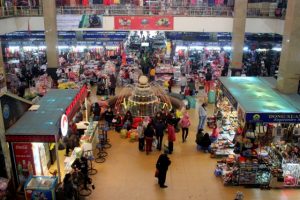
at the other side of the Old Town, the covered market building, almost exclusively for locals, again
Hanoi’s most important sights are a little further away – all still perfectly walkable, though. The Temple of Literature is Vietnam’s most important temple complex, and its oldest university, dating back to the 1070s. Five walled courtyards, adorned with ponds and lawns, ultimately end up in the ceremonial hall and the Confucian academy, a tastefully restored two-floor wooden building. Halfway the complex, a total of 82 original stelae record the names of all successful graduates between 1442 and 1779 (except those on the approximately 30 stelae that got lost over time), an impressive list, but mostly because it shows how difficult the study program was – sometimes, there are only a few names recorded!
Nearby is Hanoi’s Fine Art Museum, for which a separate entry.
Another important pagoda for the Vietnamese, the One-Legged Pagoda, is actually a rather underwhelming, often reconstructed, small affair, a wooden platform on a concrete pillar in a miniature artificial lake. Part of being underwhelming is that it almost entirely disappears in between the Ho Chi Min Museum and the old man’s Mausoleum, both your typical, ugly, communist era constructions. Totally fitting in this entourage is the huge parade ground, Ba Dinh Square – you can just imagine the military vehicles, the tanks, and the troops marching down here -, and the equally unattractive National Assembly Hall, used for Party congresses.
From here it is a short walk to the B-52 bomber, one of 23 that were shot down in December 1972, and which is now proudly presented to the public outside a Military Museum also showing a range of antique anti-aircraft artillery, not to be confused with the Military History Museum, where a MIG-22, in much better state, is displayed outside. What is it, with all those plane wrecks?
We ended up at the West Lake, taking a short cut through some of Hanoi’s typical residential quarters, with narrow lanes and small ponds, and active temples, as everywhere in town. At the lake itself is the oldest of Hanoi’s pagodas, the Tran Quac Pagoda, on a small peninsula. Probably dating back to the 6th Century AD, the temple was originally located near the Red River, which flows through Hanoi, but this was considered too vulnerable a place, upon which it was decided to move it to its current location. Most interesting, perhaps, are the burial stupas, some of which are pretty old, other rather new, honouring the past masters of the pagoda.
Oh, and the other thing about Hanoi: you can eat here really well, whether from the Eclairs served in the trendy coffee bars, or from the French restaurant’s foie gras de canard, of which rather a lot is represented on the menu – even a pho, the traditional noodle soup, made with foie gras! And don’t miss Duong’s Restaurant!
next: we look at some of the pagodas outside Hanoi.
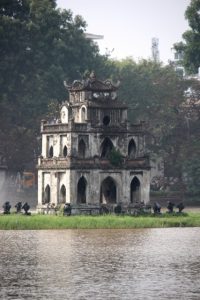
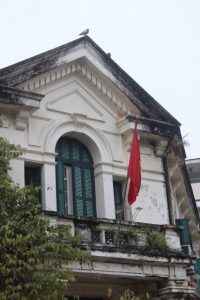
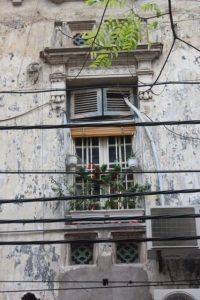
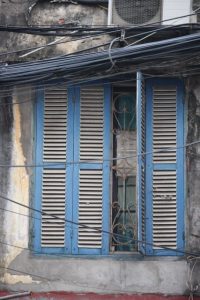
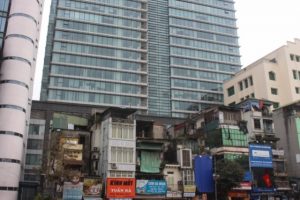
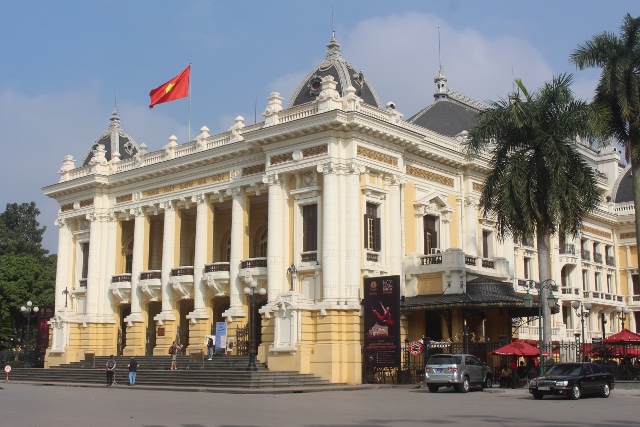
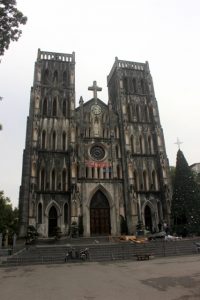


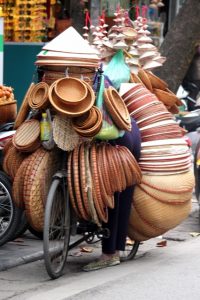



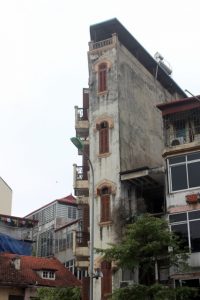
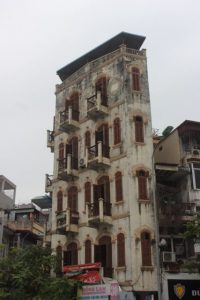
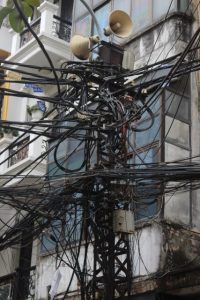


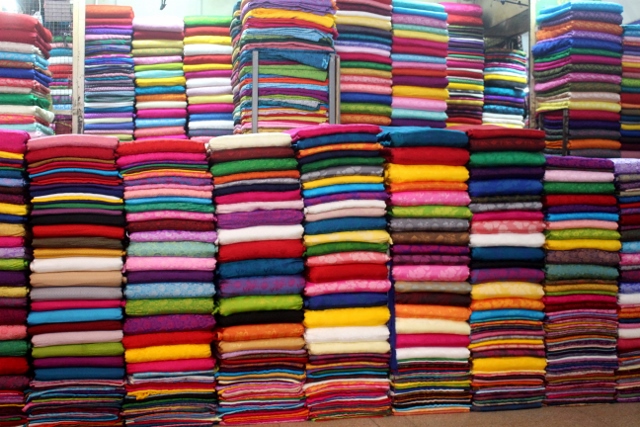
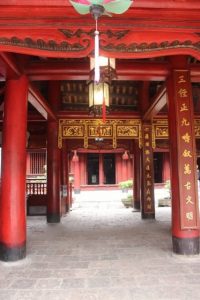
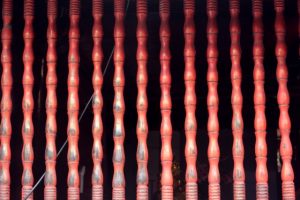


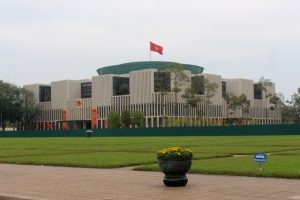


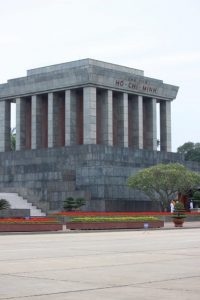
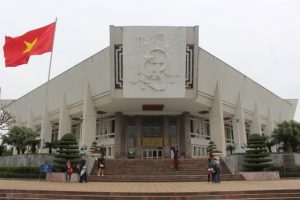

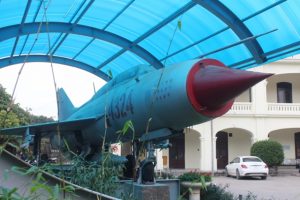


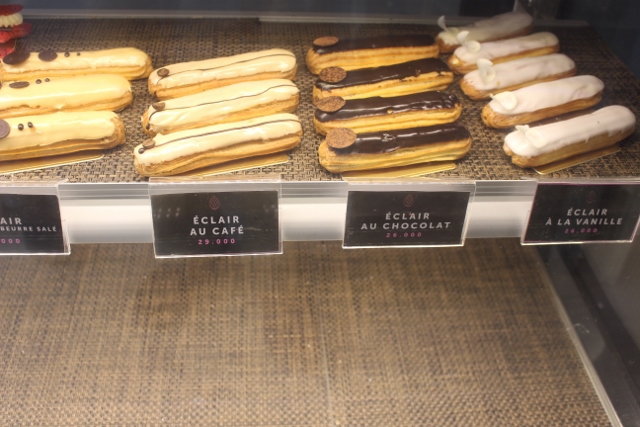









No need to explian this one ???
Misschien toch wel, hoe komt het toch dat die onderste la met eclairs leeg is, zeker een foto van gisteren?
Ah, die ‘onderste la leeg’ is omdat een van mijn travel companions langs is geweest voor ik de foto kon nemen. Slechte nieuws is dat ik uiteindelijk toch een eclair achter heb gelaten in het hotel, vanmorgen… maar inmiddels zitten we in de zon!
Ziet er goed uit en ik weet zeker dat jullie lekker hebben gegeten!
dat is een van de dingen die wel goed geregeld zijn, deze trip!
The rails is awesome! Cheers
and it is really the main line to Saigon; we did part of it on the way back from Ninh Binh, and you can almost touch the houses – if you coud open the windows, of course.